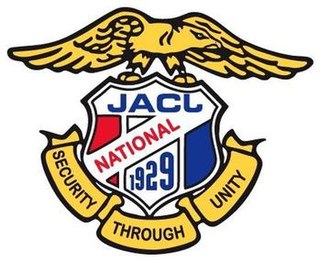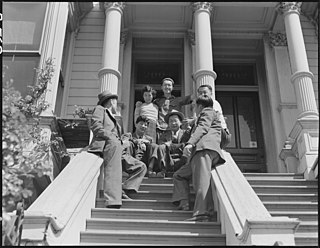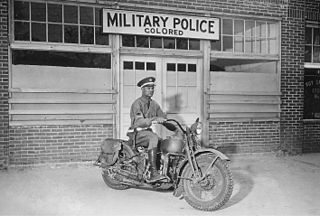
Gordon Paiʻea Chung-Hoon was an admiral in the United States Navy, who served during World War II and was the first Asian American flag officer. He received the Navy Cross and Silver Star for conspicuous gallantry and extraordinary heroism as commanding officer of USS Sigsbee from May 1944 to October 1945.

Donald Frederick "Donn" Draeger was an American practitioner and teacher of martial arts. He was the author of several important books on Asian martial arts, and was a pioneer of international judo in the United States and Japan. He also helped make the study of martial arts an acceptable topic of academic research.

The Japanese American Citizens League is an Asian American civil rights charity, headquartered in San Francisco, with regional chapters across the United States.
Dale Minami is a prominent Japanese American civil rights and personal injury lawyer based in San Francisco, California. He is best known for his work leading the legal team that overturned the conviction of Fred Korematsu, whose defiance of the incarceration of Japanese Americans during World War II led to Korematsu v. United States, which is widely considered one of the worst and most racist Supreme Court decisions in American history.
Willard Woodward Keith, Jr. was a United States Marine Corps infantry officer who was posthumously awarded the Navy Cross for his heroic leadership during World War II in the Matanikau Offensive of the Guadalcanal Campaign. Two cancelled United States Navy destroyer escorts and the destroyer USS Willard Keith (DD-775) were named in his honor.

James Patrick Sinnott Devereux was a United States Marine Corps general, Navy Cross recipient, and Republican congressman. He was the officer-in-charge (OIC) of the 1st Defense Battalion Detachment during the defense of Wake Island in December 1941. He was captured on Wake Island as a prisoner of war, along with his men, after a 15-day battle with the Japanese. After his release in September 1945, he concluded his military career as a colonel in 1948, where upon his retirement he was promoted to brigadier general. He later represented the second congressional district of the state of Maryland in the United States House of Representatives for four terms from 1951 to 1959. He was an unsuccessful candidate for election as Governor of Maryland in 1958.

Major General Marion Eugene Carl was an American military officer, World War II fighter ace, record-setting test pilot, and naval aviator. He was the United States Marine Corps' first ace in World War II.

Ethnic minorities in the U.S. Armed Forces during World War II comprised about 13% of all military service members. All US citizens were equally subject to the draft, and all service members were subject to the same rate of pay. The 16 million men and women in the services included 1 million African Americans, along with 33,000+ Japanese-Americans, 20,000+ Chinese Americans, 24,674 American Indians, and some 16,000 Filipino-Americans. According to House concurrent resolution 253, 400,000 to 500,000 Hispanic Americans served. They were released from military service in 1945-46 on equal terms, and were eligible for the G.I. Bill and other veterans' benefits on a basis of equality. Many veterans, having learned organizational skills, and become more alert to the nationwide situation of their group, became active in civil rights activities after the war.

Mike Masaru Masaoka was a Japanese-American lobbyist, author, and spokesman. He worked with the Japanese American Citizens League for over 30 years. He was a key player in encouraging cooperation of the JACL with Japanese American internment during World War II, but also fought for rights of Japanese-Americans during and after the war.

Paul M. Igasaki was the Chair and Chief Judge of the Administrative Review Board at the U.S. Department of Labor. Previously he was the Deputy Chief Executive Officer of Equal Justice Works, a national organization that advances public interest law through fellowships, loan repayment programs, pro bono programs, conferences and other methods. Prior to joining Equal Justice Works, he was executive director of the Rights Working Group, a unique nationwide coalition of groups and individuals committed to ensuring liberty and justice for all.

Young-Oak Kim was a United States Army officer during World War II and the Korean War and a civic leader and humanitarian. He was a member of the U.S. 100th Infantry Battalion and 442nd Regimental Combat Team, and a combat leader in Italy and France during World War II. He was awarded 19 medals, including the Distinguished Service Cross, two Silver Stars, two Bronze Stars, three Purple Hearts, a Bronze Medal of Military Valor, a Légion d'honneur, a Croix de Guerre, and (posthumously) the Korean Taeguk Cordon of the Order of Military Merit. After his military career, Kim dedicated his life to public service and was an active founder and leader of several non-profit organizations for underserved communities throughout Southern California. He died of cancer at the age of 86. In May 2016, members of the Congressional Asian Pacific American Caucus held a press conference, organized by the Council of Korean Americans, to call on President Barack Obama to posthumously award Kim the nation's highest civilian honor, the Presidential Medal of Freedom.

Frederick Clinton Branch was the first African-American officer of the United States Marine Corps.
Harold George Schrier was a United States Marine Corps lieutenant colonel who served in World War II and the Korean War. In World War II, he was awarded the Navy Cross for leading the patrol that captured the top of Mount Suribachi, where he helped raise the first U.S. flag on Iwo Jima on February 23, 1945. In the Korean War, he was wounded in North Korea during the Battle of Chosin Reservoir while commanding a rifle company.
The following article focuses on the movement to obtain redress for the internment of Japanese Americans during World War II, and significant court cases that have shaped civil and human rights for Japanese Americans and other minorities. These cases have been the cause and/or catalyst to many changes in United States law. But mainly, they have resulted in adjusting the perception of Asian immigrants in the eyes of the American government.

Shizuya Hayashi was a soldier in the 100th Infantry Battalion of the United States Army. He received the Medal of Honor for actions in Cerasuolo, Italy during World War II.

Barney Fushimi Hajiro was an American combat veteran of World War II who received the Medal of Honor, the highest United States military award for valor.

Sarah Keys v. Carolina Coach Company, 64 MCC 769 (1955) is a landmark civil rights case in the United States in which the Interstate Commerce Commission, in response to a bus segregation complaint filed in 1953 by a Women's Army Corps (WAC) private named Sarah Louise Keys, broke with its historic adherence to the Plessy v. Ferguson separate but equal doctrine and interpreted the non-discrimination language of the Interstate Commerce Act of 1887 as banning the segregation of black passengers in buses traveling across state lines.

A series of policies were formerly issued by the U.S. military which entailed the separation of white and non-white American soldiers, prohibitions on the recruitment of people of color and restrictions of ethnic minorities to supporting roles. Since the American Revolutionary War, each branch of the United States Armed Forces implemented differing policies surrounding racial segregation. Racial discrimination in the U.S. military was officially opposed by Harry S. Truman's Executive Order 9981 in 1948. The goal was equality of treatment and opportunity. Jon Taylor says, "The wording of the Executive Order was vague because it neither mentioned segregation or integration." Racial segregation was ended in the mid-1950s.
In the United States, tribal disenrollment is a process by which a Native American individual loses citizenship or the right to belong within a Native American tribe.
Walter R. Hart was an American judge for the Second Judicial District.














